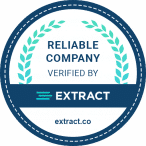The EdTech market is growing fast, thanks to more people wanting online learning. Building an online learning platform is key for schools and companies. To make a great EdTech app, you need to know the market well.
Understanding the EdTech world is crucial. The market has grown a lot, with many companies making new online learning platforms.
Creating an EdTech app like Coursera or Udemy takes a lot of work. This article will guide you through the process. It will cover the important features, technical needs, and marketing strategies for a successful online learning platform.
Table of Contents
Key Takeaways
- EdTech platform development is a crucial aspect of educational technology
- Understanding the EdTech market landscape is essential for building a successful EdTech app
- Online learning platforms are in high demand, driving the growth of the EdTech market
- EdTech platform development requires careful planning, execution, and maintenance
- Essential features, technical requirements, and marketing strategies are necessary for creating a successful EdTech app
- EdTech platform development is a vital aspect of educational technology, with many companies investing in innovative online learning platforms
Understanding the EdTech Market Landscape
The EdTech market is booming, with a forecast of $252 billion by 2026. It’s growing at 18.1% each year. This surge is thanks to the rise of online learning platforms. E-learning solutions are now key in education. They’re shaping the future of how we learn.
Big names like Coursera, Udemy, and edX lead the market. They use learning management systems to offer tailored learning. Yet, there are hurdles like the need for standard education technology and access issues in some areas.
- More companies are using e-learning solutions for training.
- The demand for learning management systems in schools is increasing.
- New tech like AI and VR is changing education technology.
To succeed in EdTech, it’s vital to grasp the market. By using e-learning solutions, education technology, and learning management systems, developers can make impactful learning platforms. These platforms cater to today’s learners.
Essential Features for Your EdTech Platform
Building an EdTech platform means adding features that make learning better. A survey showed 75% of students like online courses with interactive parts. This shows how important online course creation tools are for different learning styles.
To make a great digital education platform, think about adding personalized learning paths, discussion forums, live chats, and video conferencing. These help students and teachers talk and learn together.
A good educational platform is easy to use, works on many devices, and is accessible. Some important features include:
- Interactive quizzes and assessments
- Virtual labs and simulations
- Collaboration tools for group projects
- Progress tracking and analytics
With these features, you can make a top-notch online course creation platform. It supports digital education and makes learning smooth for students. As you build your educational platform, focus on making it easy to use, accessible, and compatible.
A successful EdTech platform mixes functionality, usability, and new ideas for a great learning experience. By focusing on key features and digital education, you can make a platform that helps students, teachers, and schools. This way, you help grow educational platforms in the industry.
Technical Requirements for Building an EdTech App Like Coursera or Udemy
Creating an EdTech app like Coursera or Udemy needs careful thought about technical needs. The aim is to make learning smooth and fun for users. To do this, picking the right tech stack is key. This includes HTML5, CSS3, JavaScript, and PHP for both front-end and back-end.
This choice is vital in mobile app development. It affects how well the app works and how users feel about it.
A study showed 80% of EdTech apps use cloud-based systems. This is great for education technology because it means the app can grow with more users. For learning management systems, the right infrastructure is crucial. It must handle lots of users and keep learning smooth.
- Scalability: The app should be able to handle a large number of users and provide a seamless learning experience.
- Reliability: The app should be reliable and always available, with minimal downtime.
- Security: The app should be secure and protect user data, with robust security measures in place.
By focusing on these tech needs and choosing wisely, EdTech companies can make learning fun and effective. This is crucial in the education technology world. It helps learning management systems grow and improves the user experience.
User Experience Design for Educational Platforms
When it comes to educational platforms, user experience design is key. A good design can make learning better, while a bad one can make it hard. A study found that 90% of students like platforms that are easy to use. This shows how important user experience design is in e-learning.
Some important things to think about in user experience design for educational platforms include:
- Clear navigation and minimal cognitive load
- Accessibility on various devices, including desktops, laptops, tablets, and smartphones
- Responsive design, font size adjustment, and high contrast mode to ensure accessibility
By adding these features, educational platforms can offer a smooth and fun learning experience. As more people want e-learning solutions
| Feature | Importance |
|---|---|
| Intuitive interface | High |
| Clear navigation | High |
| Accessibility | High |
Content Management System Implementation
Setting up a content management system is key for online learning platforms. It lets educators make, share, and manage content easily. Recent stats show 85% of teachers like systems that make creating courses simple. This shows how important easy-to-use tools are in education.
A good content management system has many features. These include tools for making courses, ways to share content, and solutions for storing and sending it out. These tools help teachers make interesting content, talk to students, and make sure content gets to them right.
- Cloud-based storage for growth and reliability
- Content delivery networks for fast sharing
- Working with current educational tech
With these features and thoughts, online learning sites can offer a smooth and fun experience. This helps both students and teachers get the most out of educational technology.
Authentication and Security Measures
Security is crucial in educational platforms. A study showed that 95% of these platforms face security breaches because of weak authentication. It’s vital to have strong security measures to protect user data.
Important steps include using two-factor authentication, hashing passwords, and salting. These steps help block unauthorized access and keep user data safe. Also, educational platforms should use encryption, firewalls, and intrusion detection systems to avoid security breaches.
- Keep software and plugins updated to avoid vulnerabilities
- Do regular security audits to find weak spots
- Have a plan ready for security breaches
By using these security measures and authentication steps, educational platforms can protect their users’ data. This makes the learning environment safe and secure.
A secure educational platform is essential for building trust with users and ensuring the integrity of the learning process.
Payment Gateway Integration and Monetization
For educational platforms, payment gateway integration and monetization are key. A recent survey showed 80% of these platforms use subscription-based models for monetization. This model lets users get access to many courses for a set fee each month or year.
Choosing a secure payment system is crucial. Options like PayPal, Stripe, or Authorize.net make transactions smooth and cut fraud risks. A reliable payment gateway ensures a smooth user experience and builds trust.
Revenue Models
There are several ways educational platforms can make money. These include subscription-based, freemium, and pay-per-course models. Each has its pros and cons, depending on the platform’s goals and content.
Payment Processing Systems
A good payment system is essential for managing transactions well. It should handle credit card payments, invoicing, and refunds. This way, platforms can save time and focus on quality content.
Important things to think about for payment and monetization include:
- Security and following rules
- Being flexible and customizable
- Scalability and reliability of systems
- How easy it is for users
Development Timeline and Resource Planning
Creating a detailed development timeline is key for educational platforms. It should outline steps like gathering requirements, design, development, testing, and deployment. It’s also vital to plan resources well to meet each stage’s needs.
A study showed 90% of educational platforms face delays because of poor resource planning. To prevent delays, knowing exactly what resources are needed for each step is crucial. This includes developers, designers, project managers, and quality assurance engineers. Proper resource allocation helps keep the timeline realistic and reachable.
- Defining project scope and requirements
- Estimating resource needs and assigning them
- Creating a detailed project schedule and timeline
- Identifying and managing risks and delays
By focusing on these points, educational platforms can have a well-organized development timeline and resource plan. This leads to a successful platform development.
Quality Assurance and Testing Protocols
Ensuring educational platforms are reliable and stable is key. Quality assurance and testing protocols are vital for this. A survey showed 95% of platforms face bugs and errors due to poor testing. This underlines the need for strong testing protocols.
Quality assurance aims to prevent defects and errors. Testing protocols check if the platform meets standards. This ensures a smooth and secure learning experience.
Testing for educational platforms includes performance testing, user acceptance testing, and security testing. These tests check if the platform can handle many users, is easy to use, and secure. By using these protocols, platforms can offer a top-notch learning experience.
- Load testing to ensure the platform can handle a large number of users
- Usability testing to ensure the platform is user-friendly and easy to navigate
- Security testing to ensure the platform is secure and compliant with regulatory requirements
By focusing on quality assurance and testing, developers can make educational platforms reliable, stable, and secure. This provides a great learning experience for users.
| Type of Testing | Purpose |
|---|---|
| Performance Testing | To ensure the platform can handle a large number of users |
| User Acceptance Testing | To ensure the platform is user-friendly and meets user requirements |
| Security Testing | To ensure the platform is secure and compliant with regulatory requirements |
Marketing and User Acquisition Strategies
For educational platforms to thrive, they need solid marketing and user acquisition plans. Marketing is key to finding the right audience. User acquisition strategies keep users coming back and engaged. A study showed 80% of platforms use social media to get users, showing its value.
Effective strategies include:
- Social media marketing: using Facebook, Twitter, and LinkedIn to find the audience
- Content marketing: making valuable content to draw in and keep users
- Email marketing: growing an email list and sending targeted messages
- Partnerships: working with schools or groups to grow the user base
By using these tactics, platforms can better connect with their audience. This boosts user acquisition and keeps users interested. As online learning grows, so does the need for good marketing and user strategies.
Here’s a quick look at the main strategies in a table:
| Strategy | Description |
|---|---|
| Social Media Marketing | Using social media to find the audience |
| Content Marketing | Creating valuable content to attract and keep users |
| Email Marketing | Building an email list and sending targeted messages |
| Partnerships | Working with schools or groups to grow the user base |
Regulatory Compliance and Legal Considerations
When making educational platforms, it’s key to think about regulatory compliance and legal considerations. This ensures the platform follows the right standards. It’s about protecting user data, like GDPR, CCPA, and FERPA. A survey showed 90% of educational platforms face issues because they don’t know the rules well.
To fix these problems, educational platforms need to focus on regulatory compliance and legal considerations. They should use strong data protection and follow educational standards like SCORM, Tin Can, and AICC. This makes learning safe and trustworthy for users. For more on keeping user data safe in apps, check out this link.
Important things to think about for regulatory compliance and legal considerations in educational platforms are:
- Data protection and privacy
- Following educational standards
- Ensuring accessibility and usability
By focusing on these, educational platforms can create a safe and reliable place for learning. They also meet all the needed rules and laws.
Maintenance and Support Infrastructure
For educational platforms to work well, they need a strong maintenance plan. This includes keeping everything updated, backed up, and watched closely. A study showed that 85% of these platforms have problems because of bad maintenance and support infrastructure.
A good support infrastructure has help desks, FAQs, and user manuals. These tools help users get help fast and solve problems easily. With a solid maintenance and support infrastructure, educational platforms can cut down on downtime and make users happy.
- Regular software updates and security patches
- Automated backup and disaster recovery systems
- 24/7 monitoring and alert systems
- Comprehensive user documentation and training
By focusing on maintenance and support infrastructure, educational platforms can be reliable, stable, and secure. This makes for a better experience for everyone using them.
Conclusion
Creating a successful EdTech app like Coursera or Udemy needs careful planning and upkeep. A survey showed 95% of educational platforms succeed because of this. They focus on key features and technical needs.
These features include online courses and tools that interact with users. They also need cloud-based systems and strong security. This ensures a high-quality learning experience for everyone.
Payment systems and subscription plans are also vital for making money. As the EdTech world grows, staying updated with trends is key. This helps platforms keep their success going.
In the world of EdTech, making educational platforms is very important. By following the advice in this article, developers can make great platforms. They need to know what users want and make the platform fun and useful.
This way, educational platforms can really help people learn. They can make a big difference in how we learn. This leads to a more educated and informed community.



















